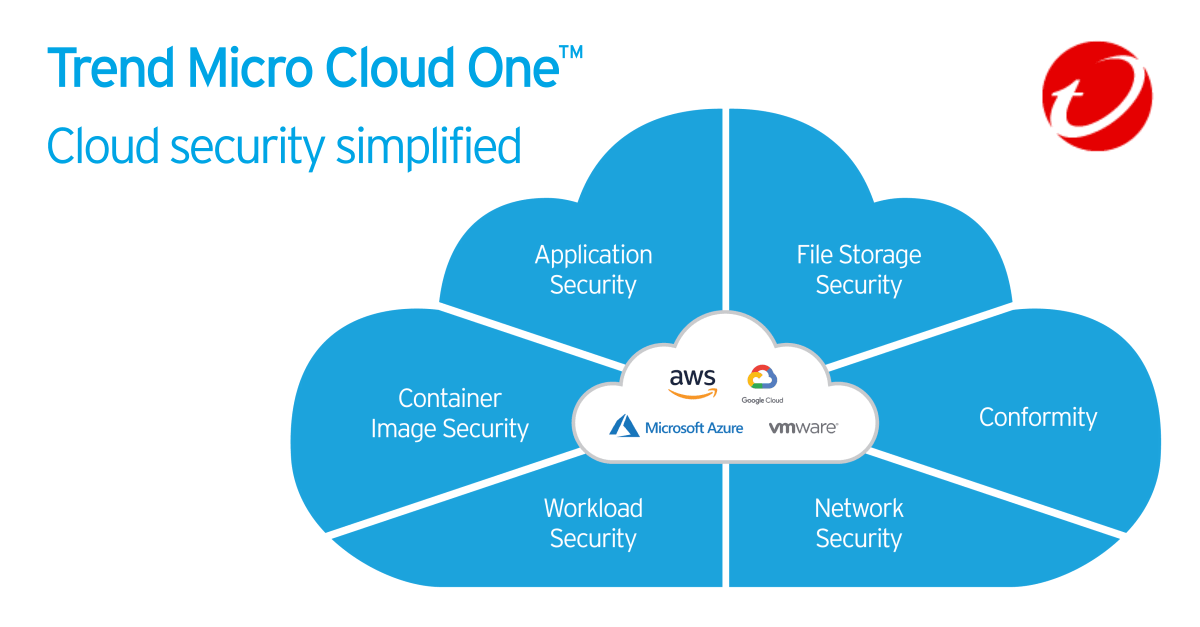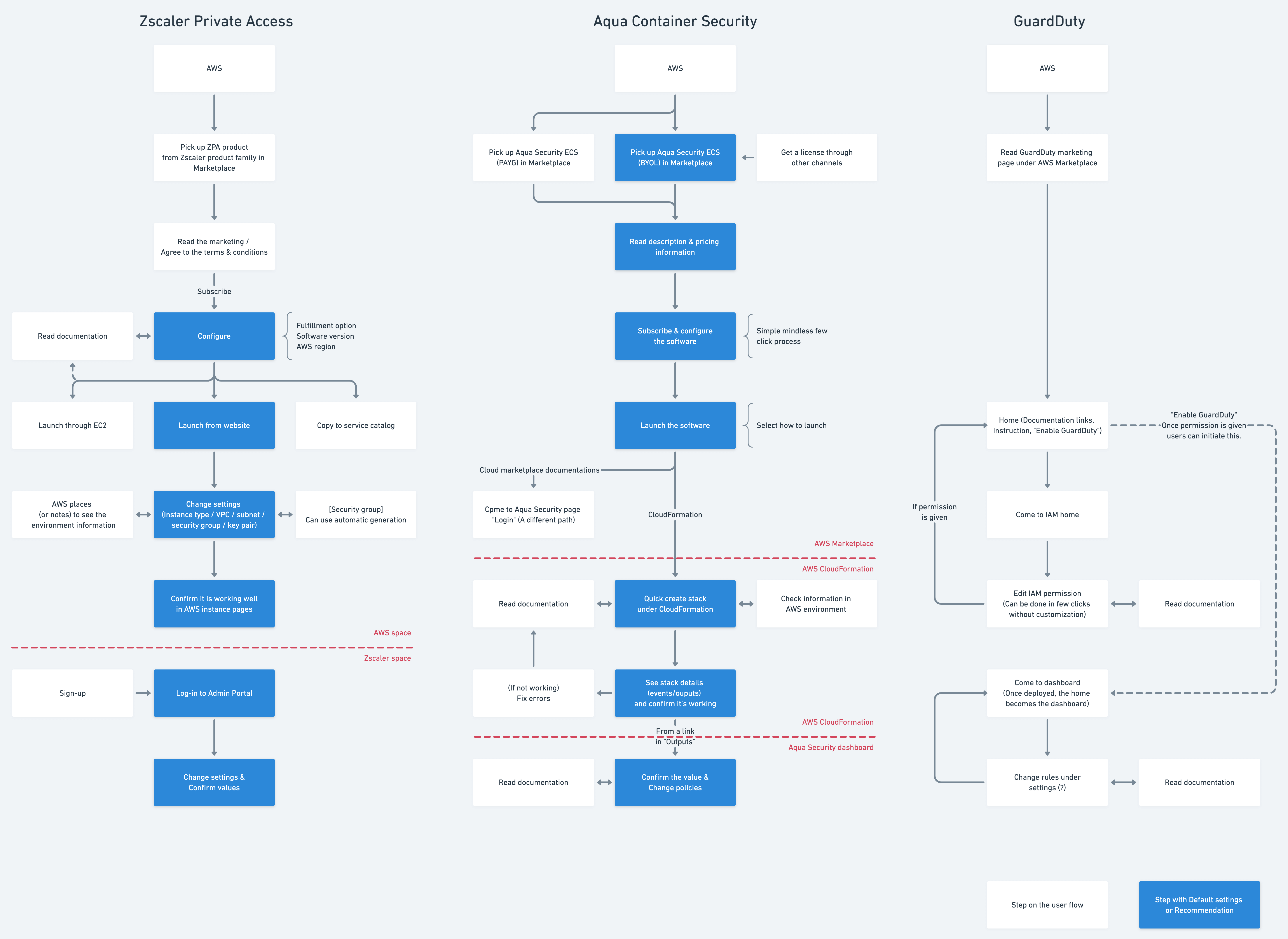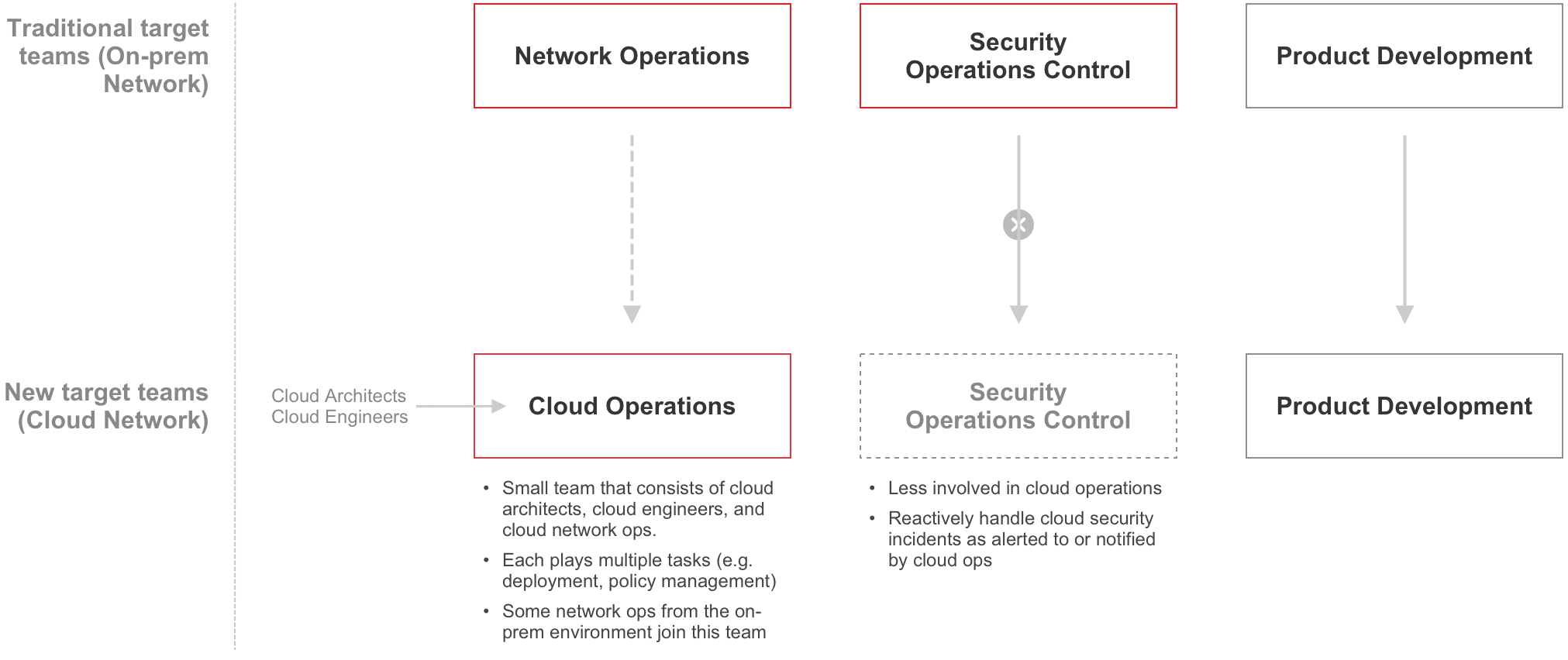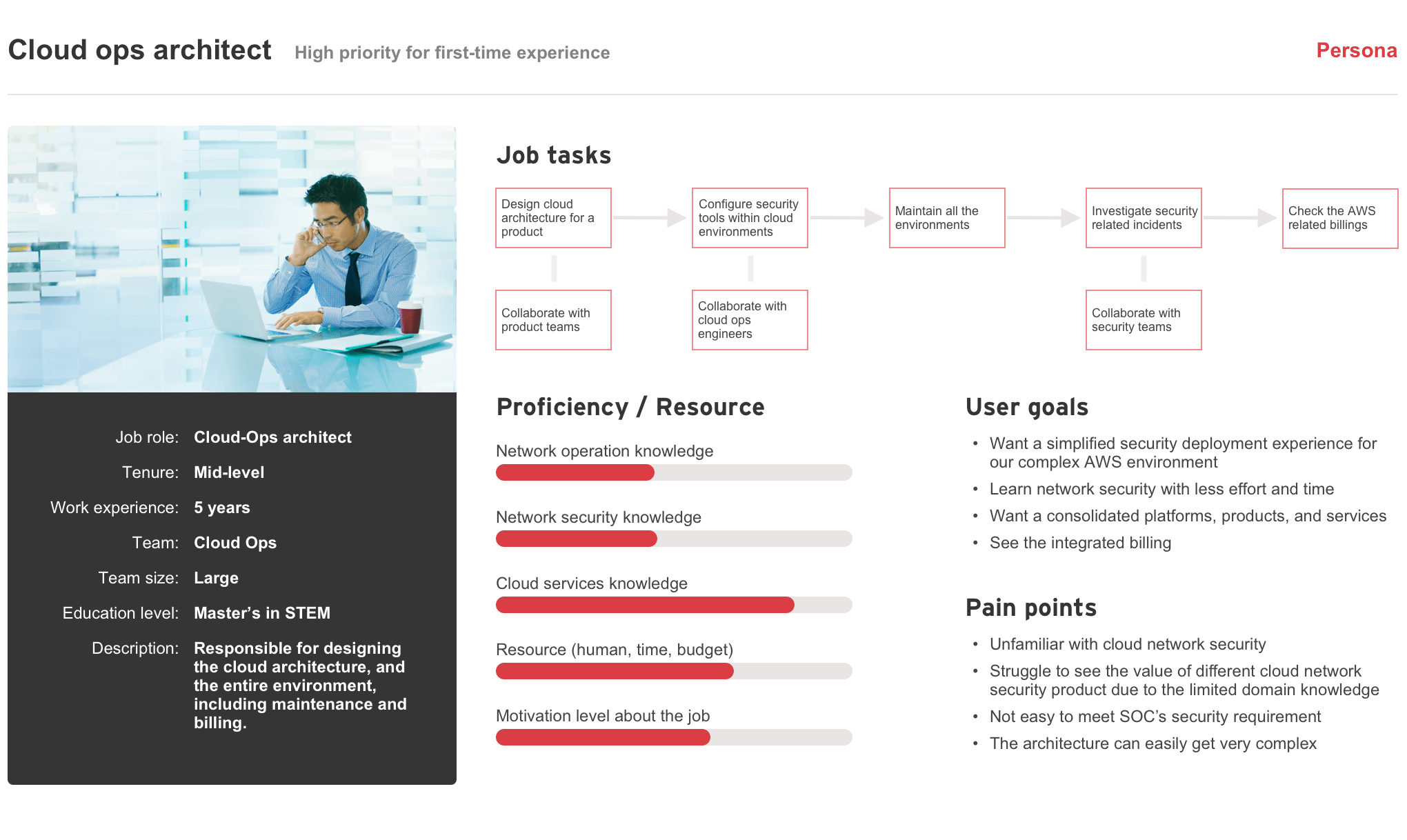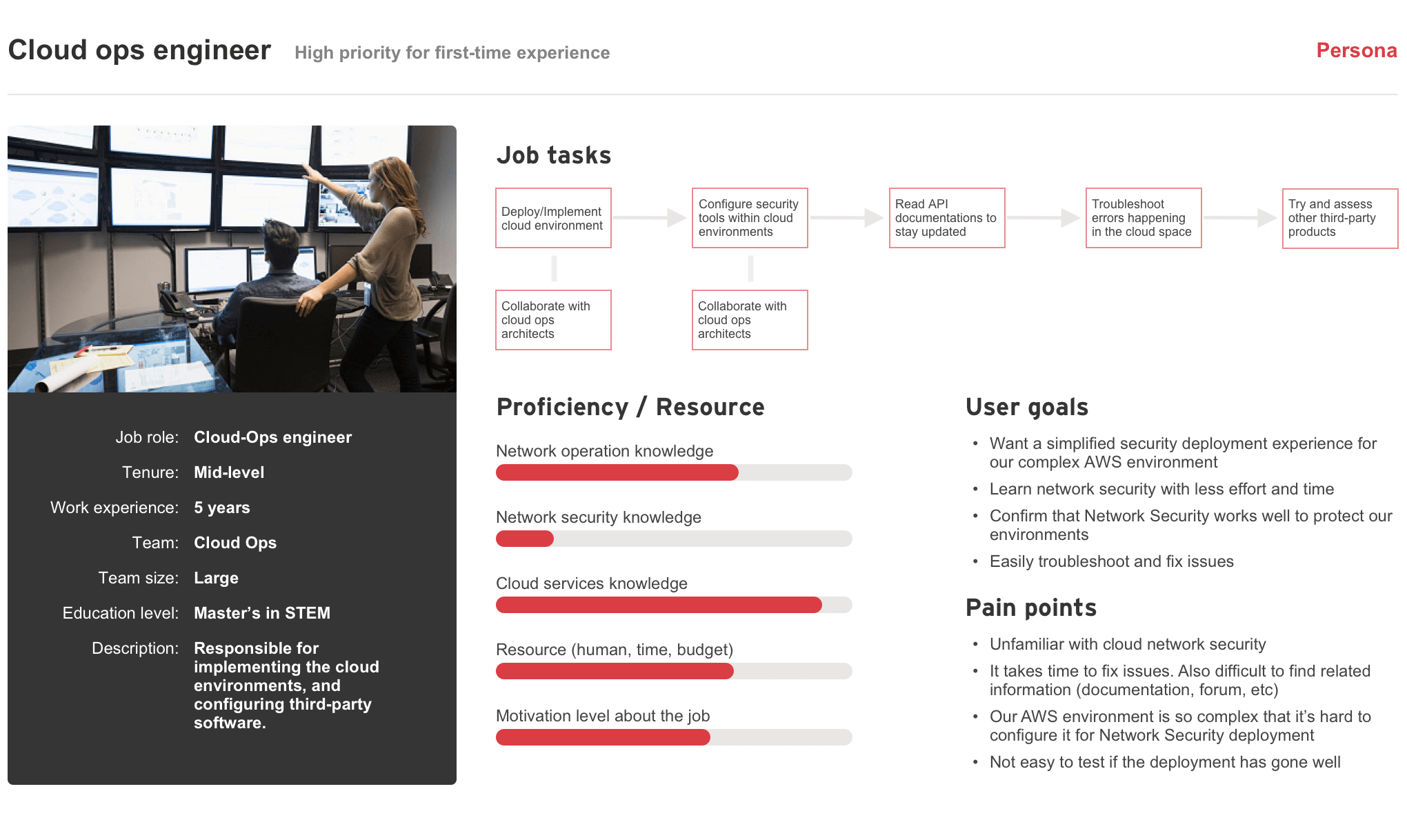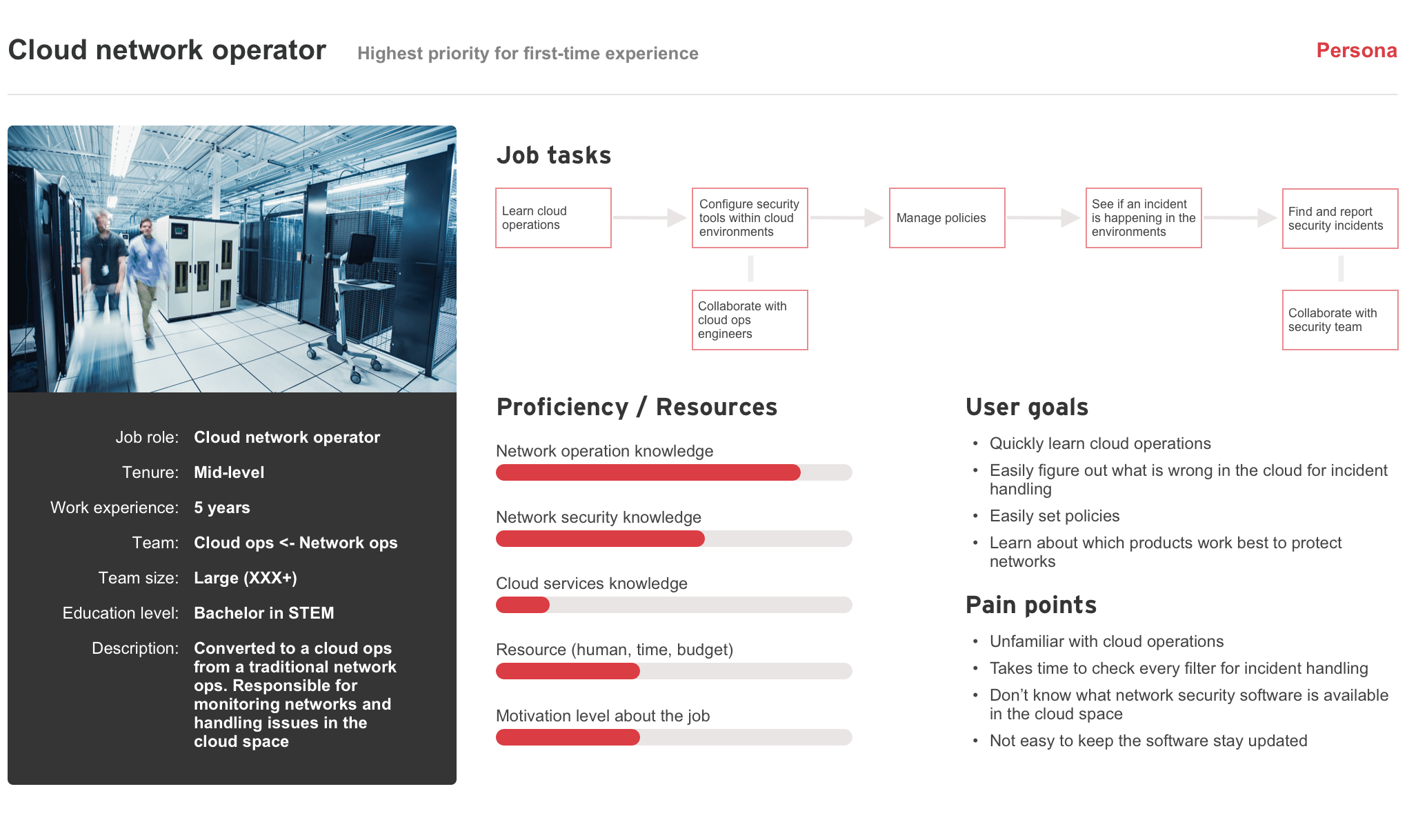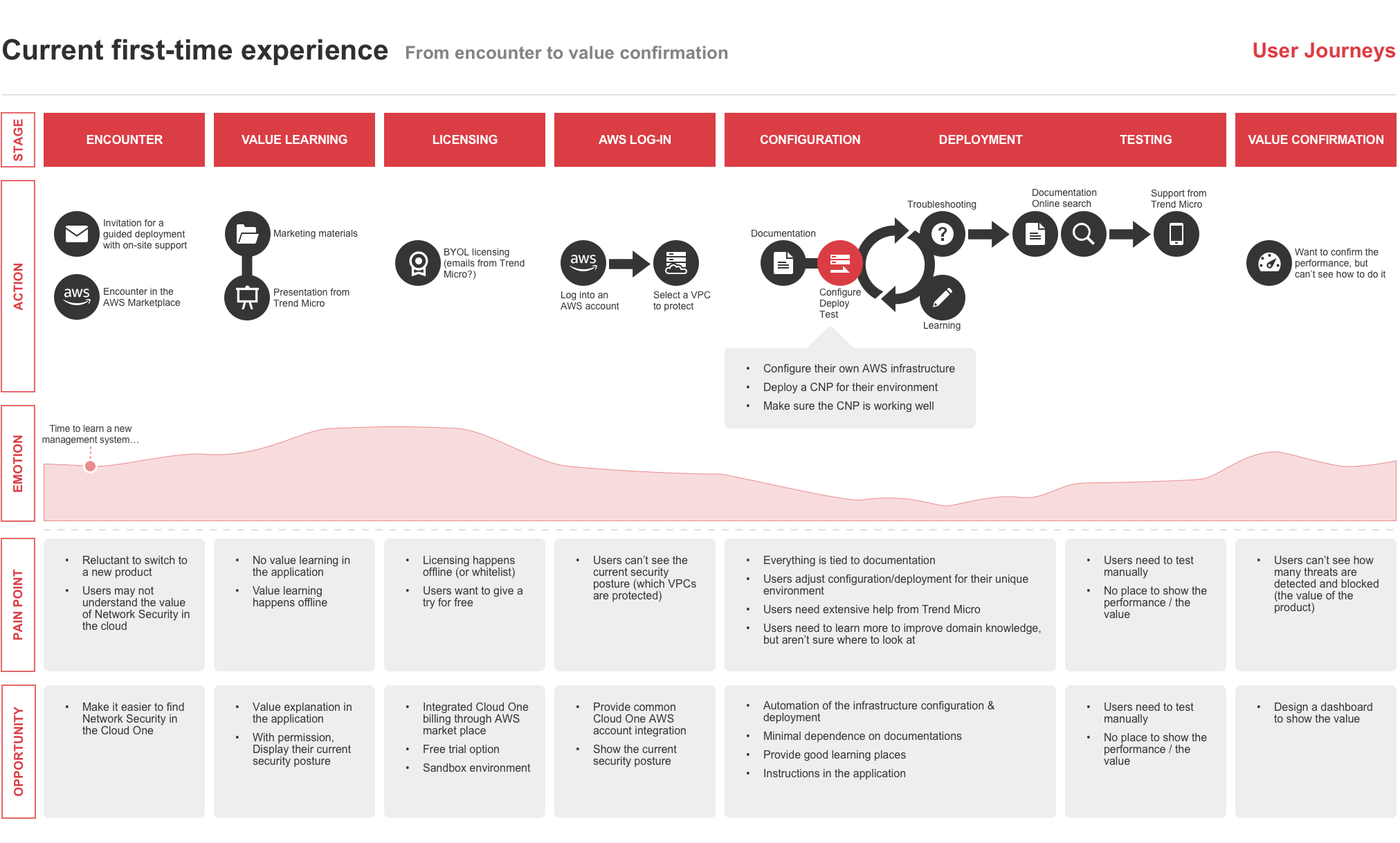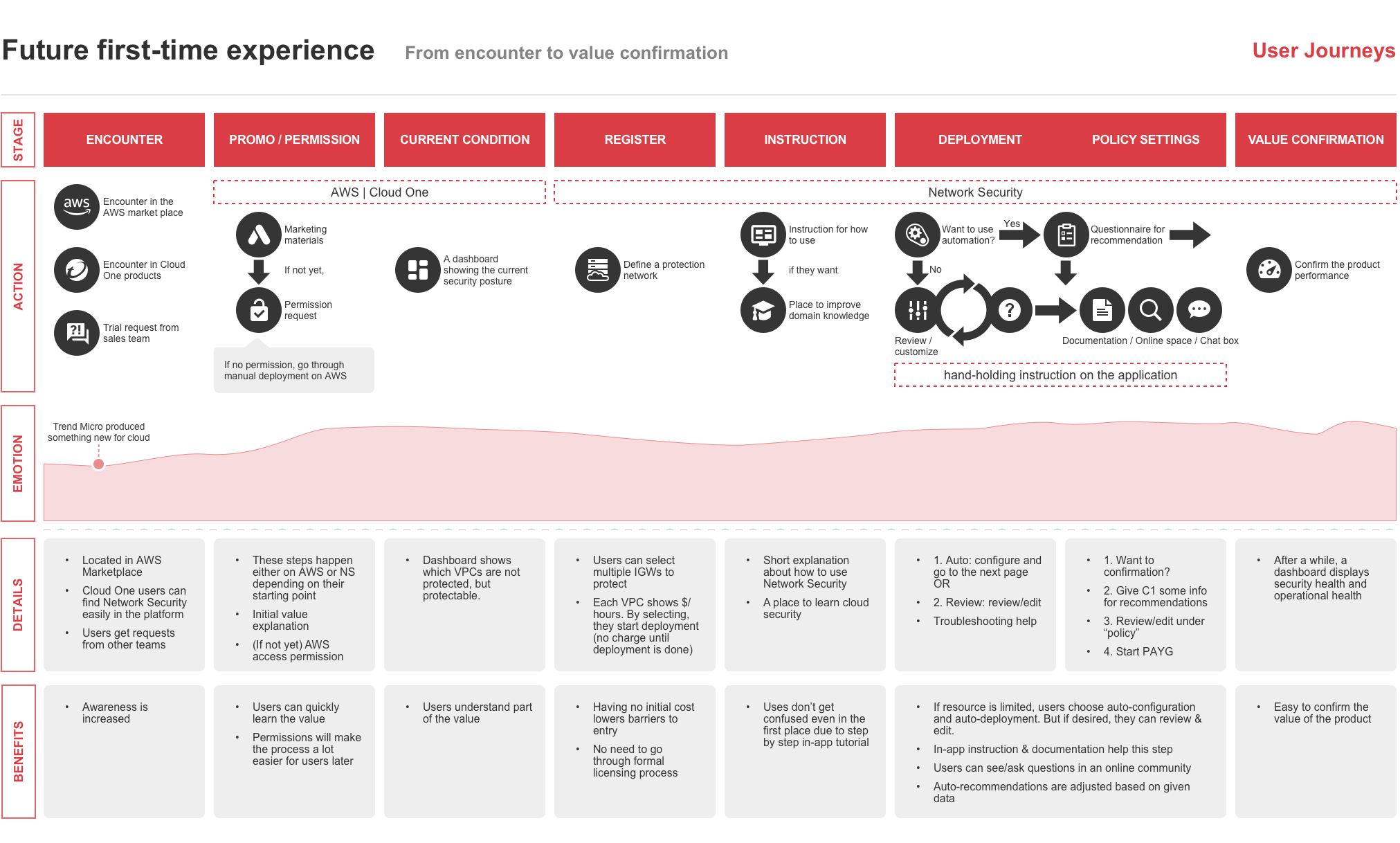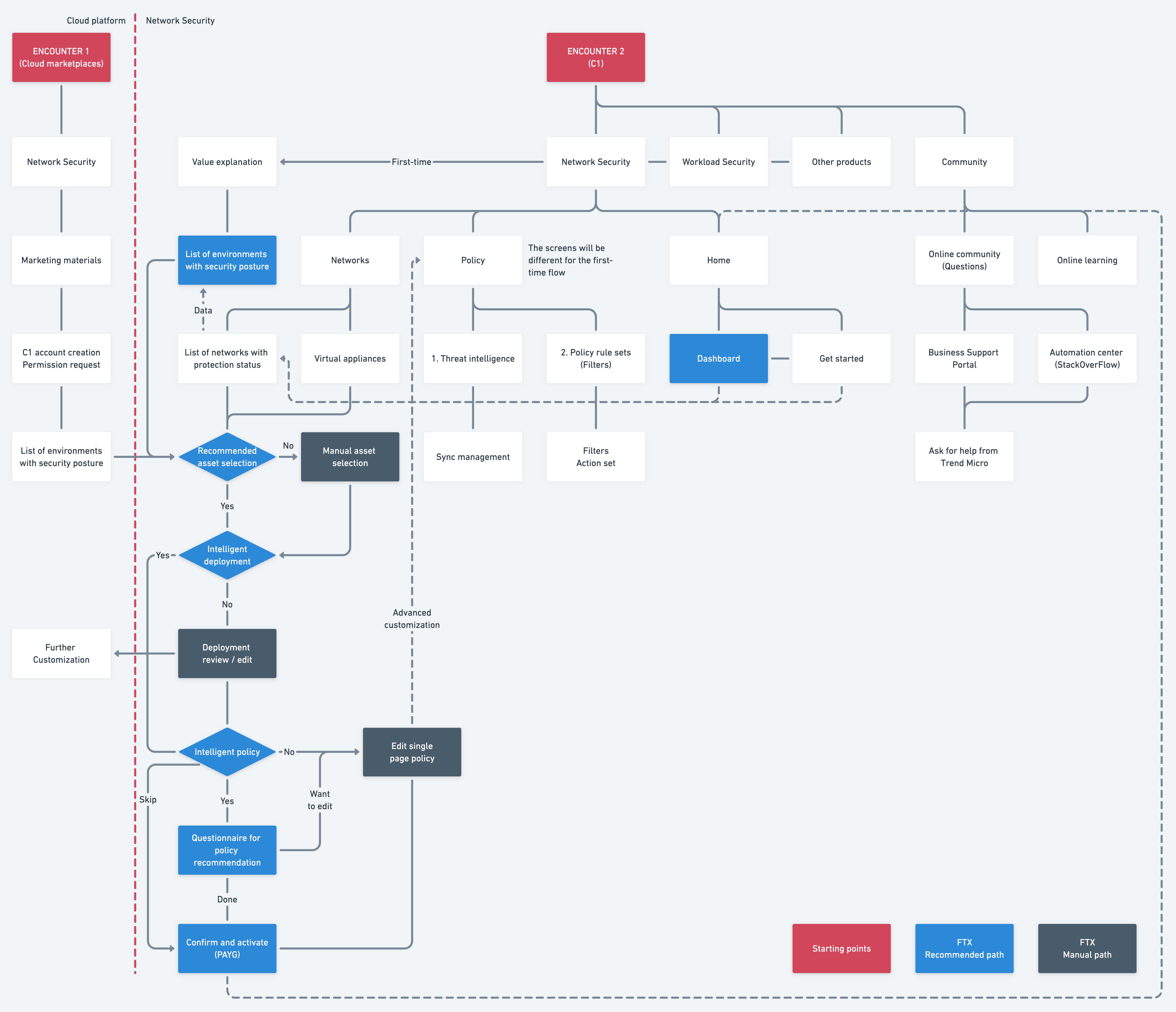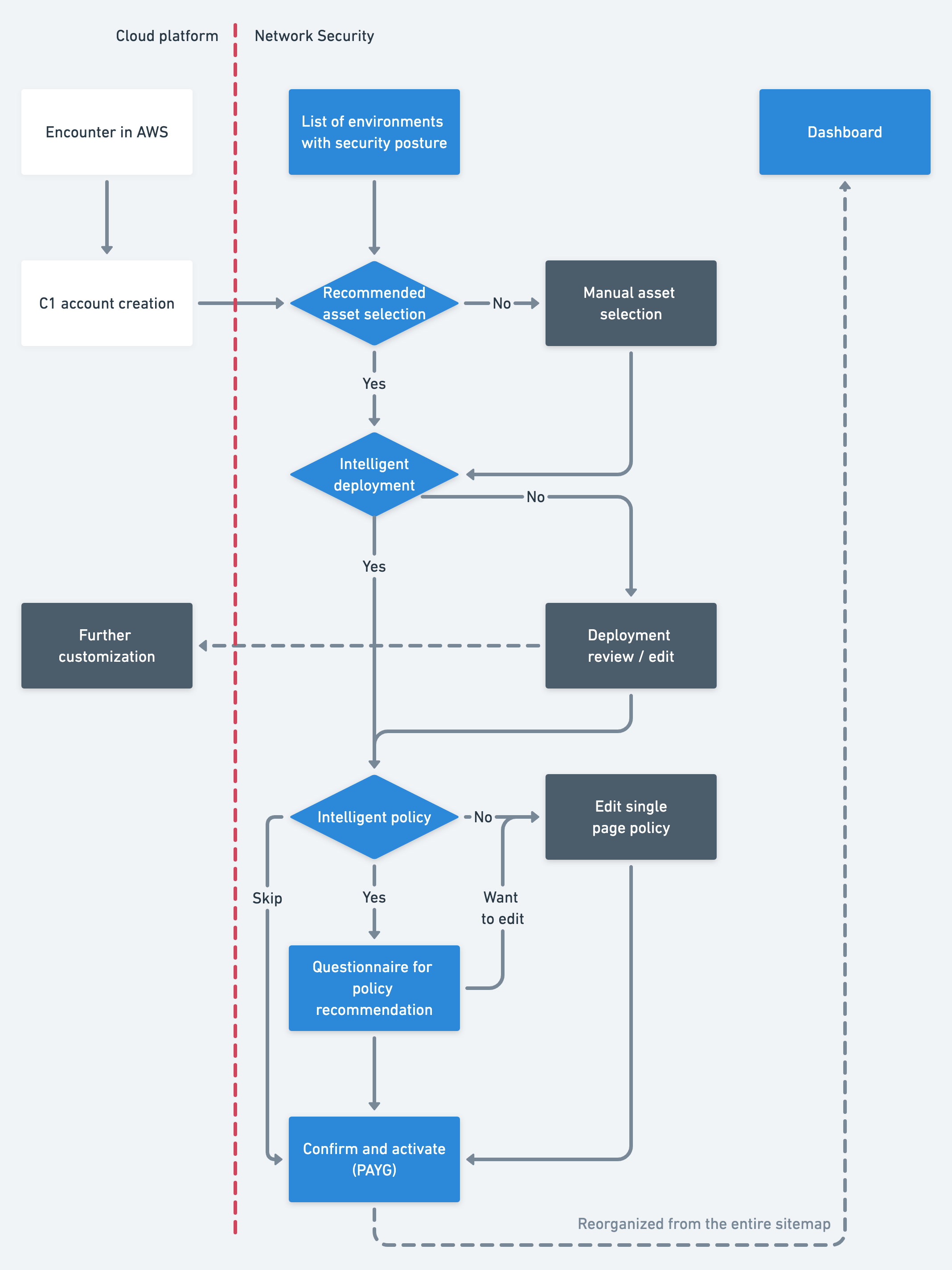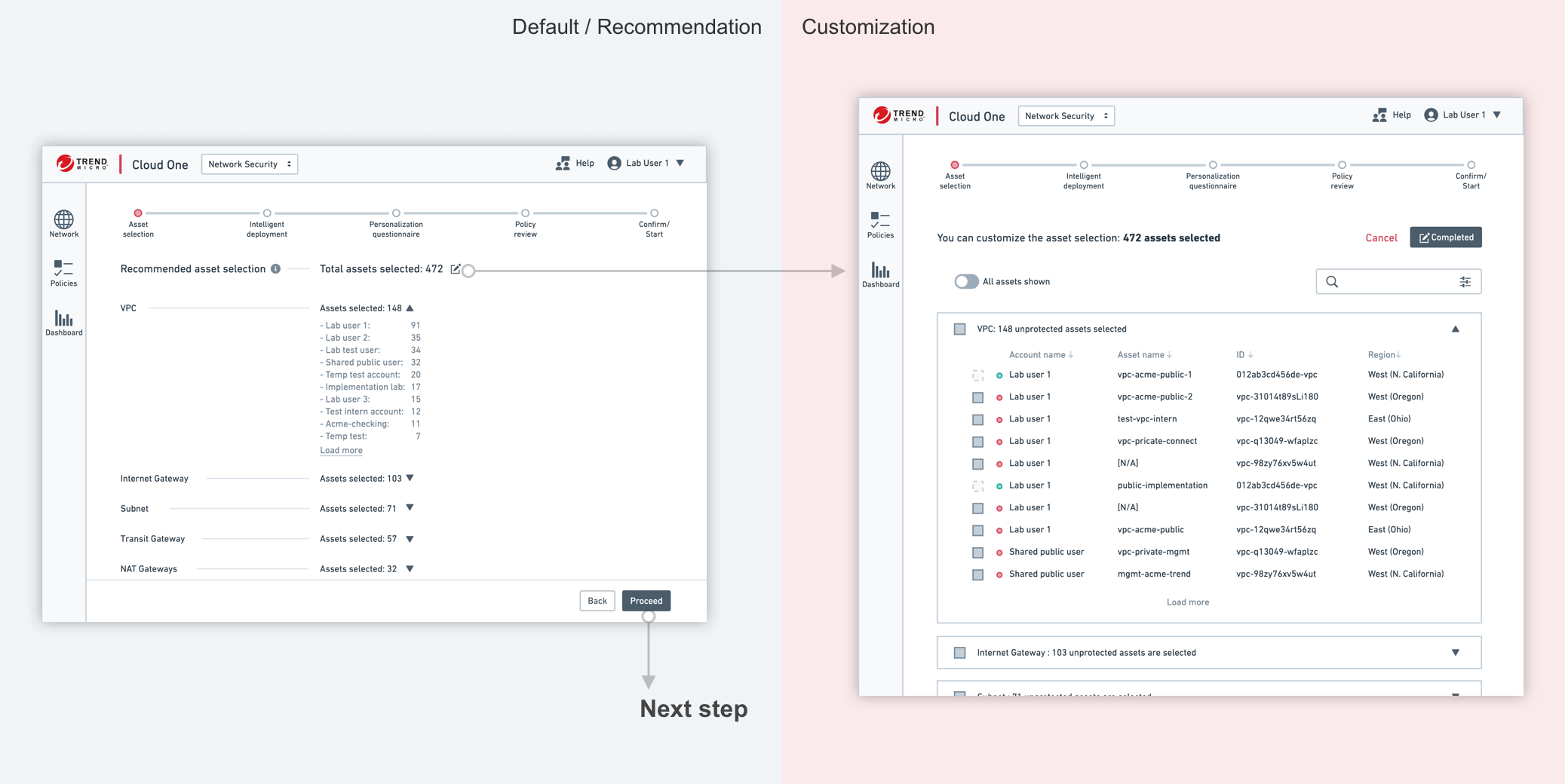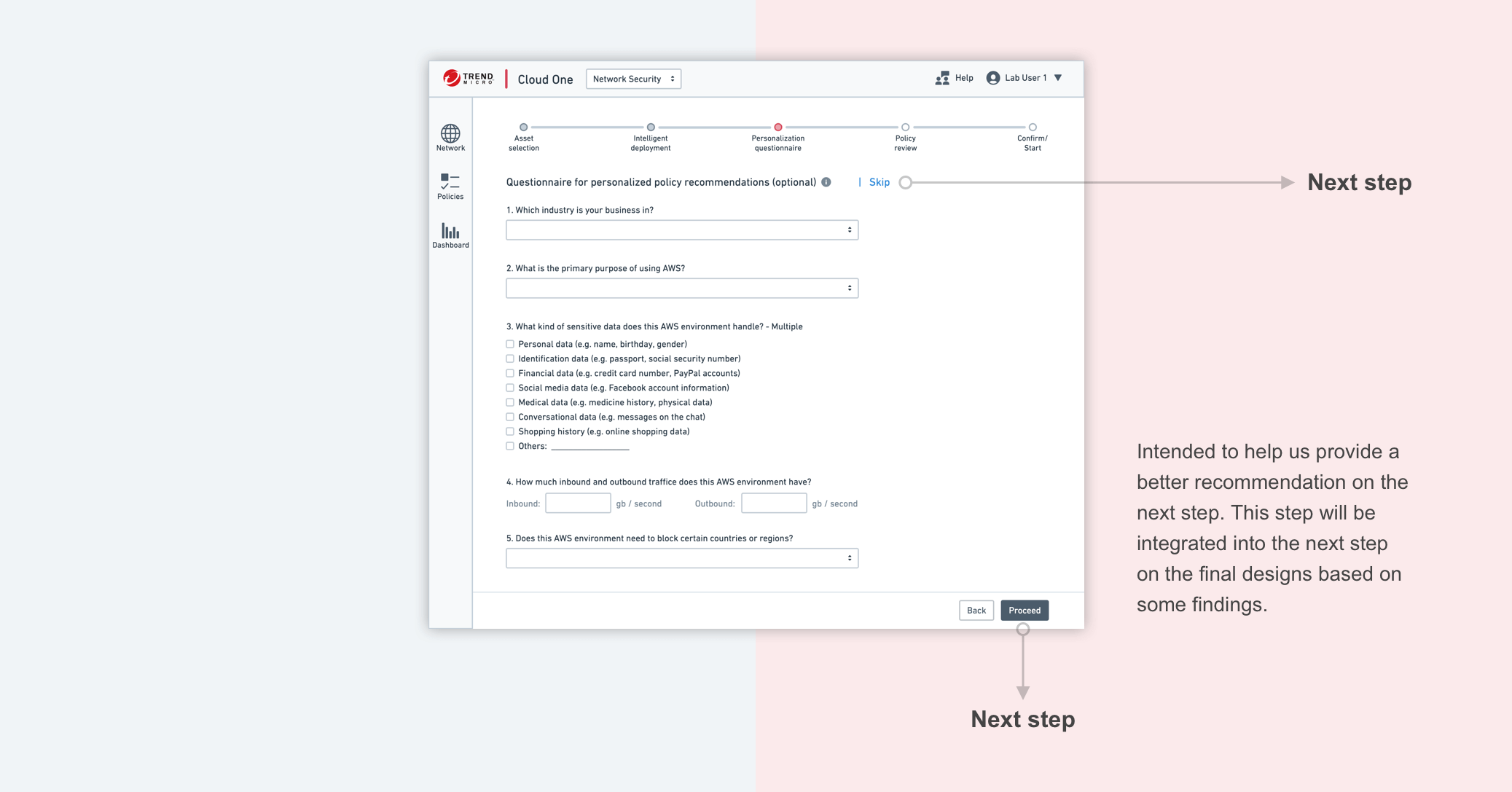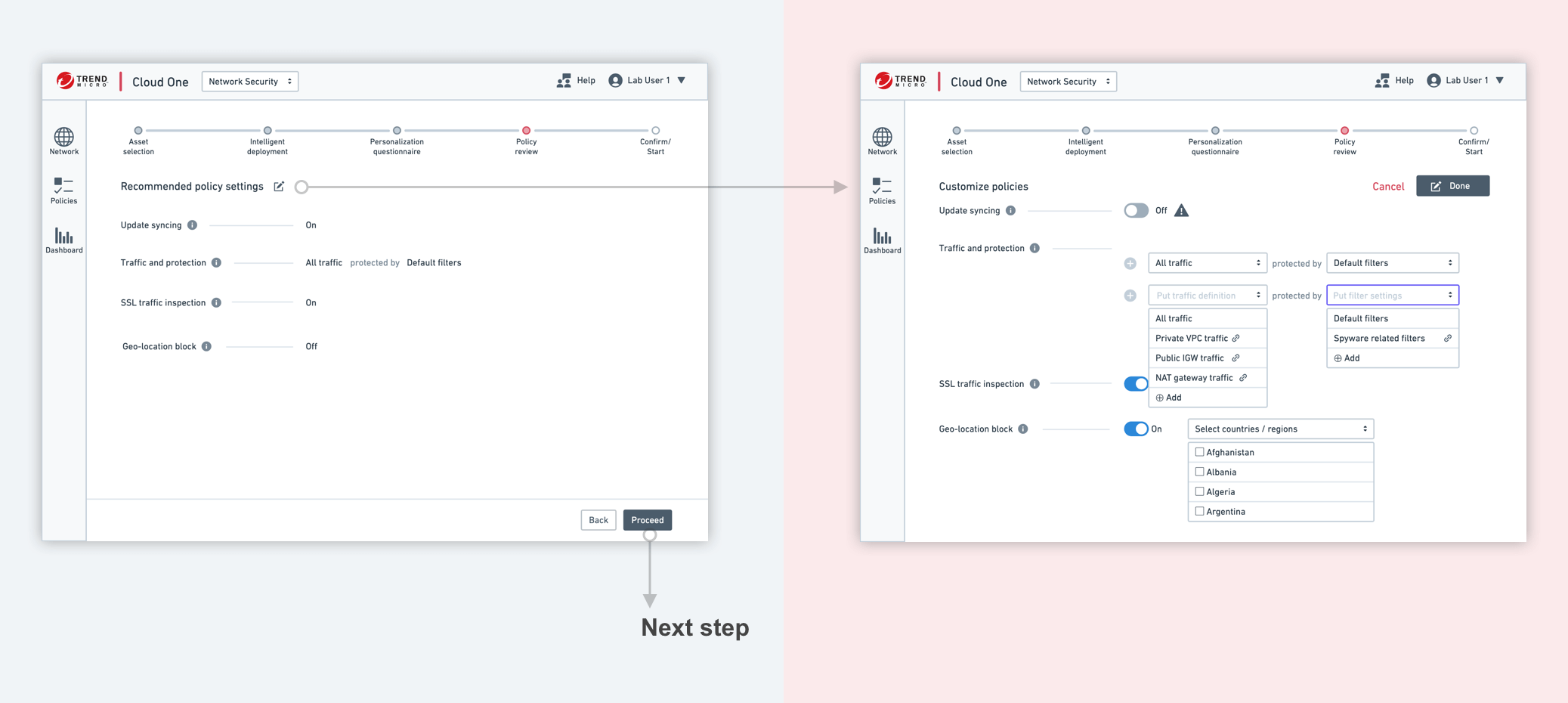Background
Trend Micro is launching Cloud One Network Security™. Traditionally, the onboarding experience (or "first-time experience") of network security products takes up lots of time and effort. This project aims to mitigate these pains.
Project goals
- Users can understand the product values and features clearly
- The first-time users can easily deploy a Network Security instance and set policies for their environments
Competitive analysis
I analyzed how other products in the cloud security space handle the first-time experiences.
Key takeaways:
- Default/Recommendation: Zscaler and Aqua provide both a default option and a customization option. If user doesn't want to spend much time, they can use the default option.
- Switch between different places: Zscaler and Aqua require users to jump between different places such as AWS, documentation pages, and their portal websites.
- Not streamlined experience: GuardDuty requires users to learn and start by themselves.
Persona development
As we enter the cloud network work security from the on-prem network security, we need to redefine our target teams and personas. Through conversations with potential users and stakeholders, I defined five different personas with priorities.
Key takeaways:
- Our focus will shift from the network operations and security operations control teams in the on-prem network to cloud operations in the cloud network.
- The cloud operations teams are multifunctional and have different job roles, such as cloud ops architect, cloud ops engineer, and cloud network ops.
User journey mapping
Through discussions, I created two user journeys: one for the current state, and another for the ideal future scenario.
Current / Painful
- Manual deployment: Users need to understand the steps and manually fill out input fields on AWS by themselves.
- Heavily tied to documentation: Users need to read the documentation carefully. If they receive an error, they read it once more to manually fix it.
- Many switches between different places: Users need to jump among documentations, AWS pages, and Network Security to complete the first-time experience.
- No value confirmation: It's not easy to see how well Network Security is protecting their environments.
Future / Ideal
- Default / Recommendation: Users can use default settings to deploy an NS instance and set policies. If so, they just need to review and click.
- Customization: Users still can customize deployment and policy settings. But the UI will minimize the dependence on documentation.
- Only on Network Security: Most of the actions can be completed on Network Security.
- Dashboard: It shows the performance, operational health, and security health of their environment.
Information architecture
To achieve the future first-time user journey, I proposed a new site-map created through discussions with the stakeholders.
Focusing on the first-time experience elements...
Highlights:
- Recommendation: Users can use the recommended settings. The recommendation path is streamlined. (blue boxes)
- Customization: This user flow still allows users to customize for their environment. Most of the customization can be done in the GUI of Network Security. (grey boxes)
- Dashboard: At the end of the flow, users can confirm the value of Network Security through a dashboard.
Wireframes
I visualized and improved the design solutions through the multiple rounds of usability testings and the design reviews.
Usability testings
I provided two scenarios of the first-time experience.
- Default / Recommendation: Your resource is limited, so you would like to deploy an NS instance and set policies as quickly as possible.
- Customization: You need to follow the cloud security rules of your company. So, you need to customize deployment and policy settings.
Hi-Fi designs
0. Platform selection
1. Asset selection
Users can choose multiple assets. They first see the default selection, and then they can customize if they want.
2. Deployment model selection
Users are given several deployment model options. Alternatively, they can go to AWS to deploy on their own.
3. Policy settings
Users are given three options: default, customization, and dynamic recommendation. To use the "recommendation" option, they need to fill out a questionnaire.
4. Confirmation + Dashboard
Reflection
User research in enterprise products
Traditionally, the first-time experience was all manual for network security products. I need to rearrange the process and automate actions that most users would do the same. It required an understanding of their mental model about what action they want to automate and their domain knowledge on cloud security products. This project reminded me of the importance of user research.
Happy path v.s. Customization path
In this project, I considered two scenarios: One is when users use recommended settings to save resources. Another is when users customize it. This pattern seems common in security products, and I ideated what to show in the happy path while navigating users to the customization path only when needed. Through this project, I could improve my logical thinking and storytelling abilities.
